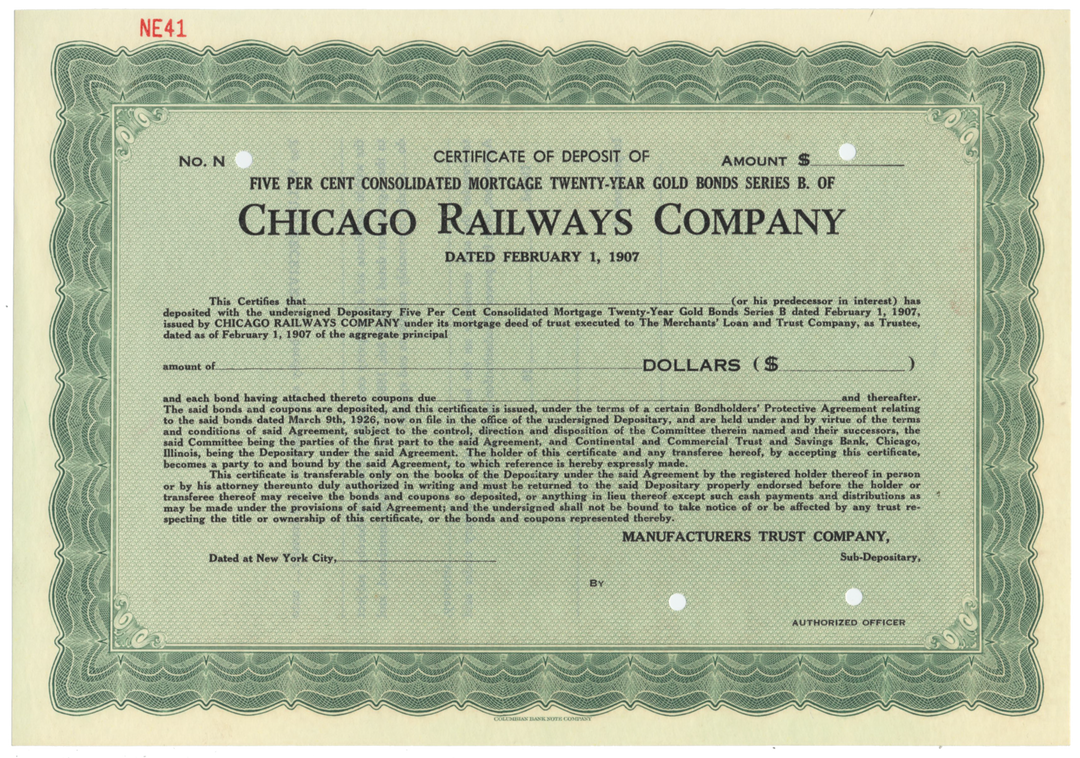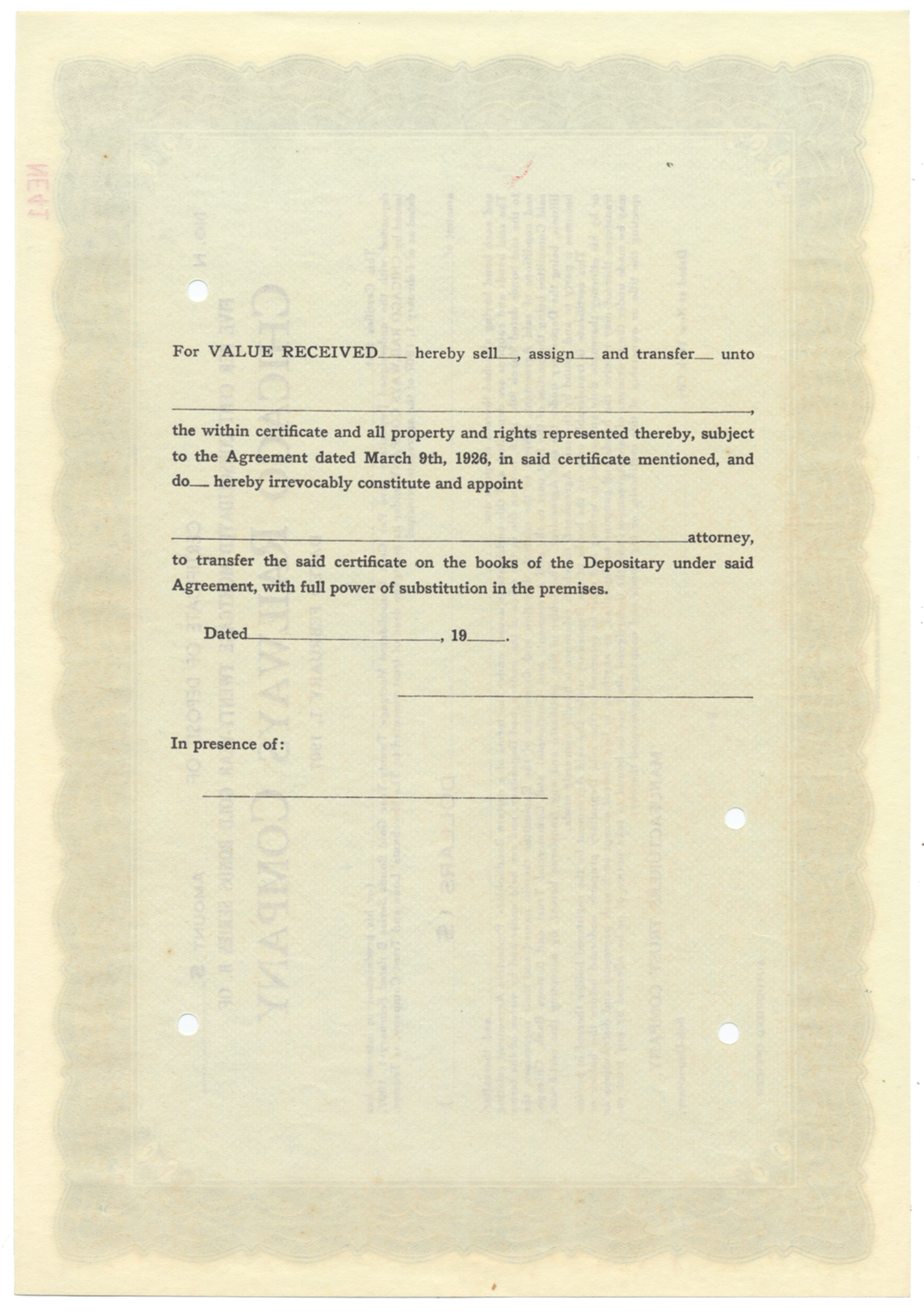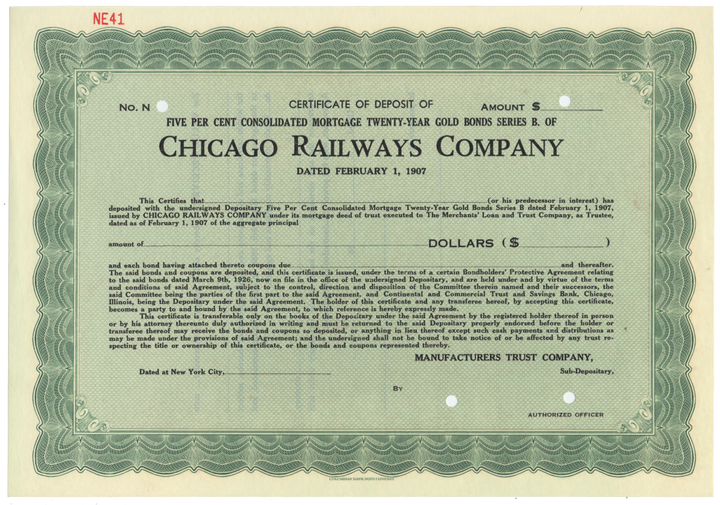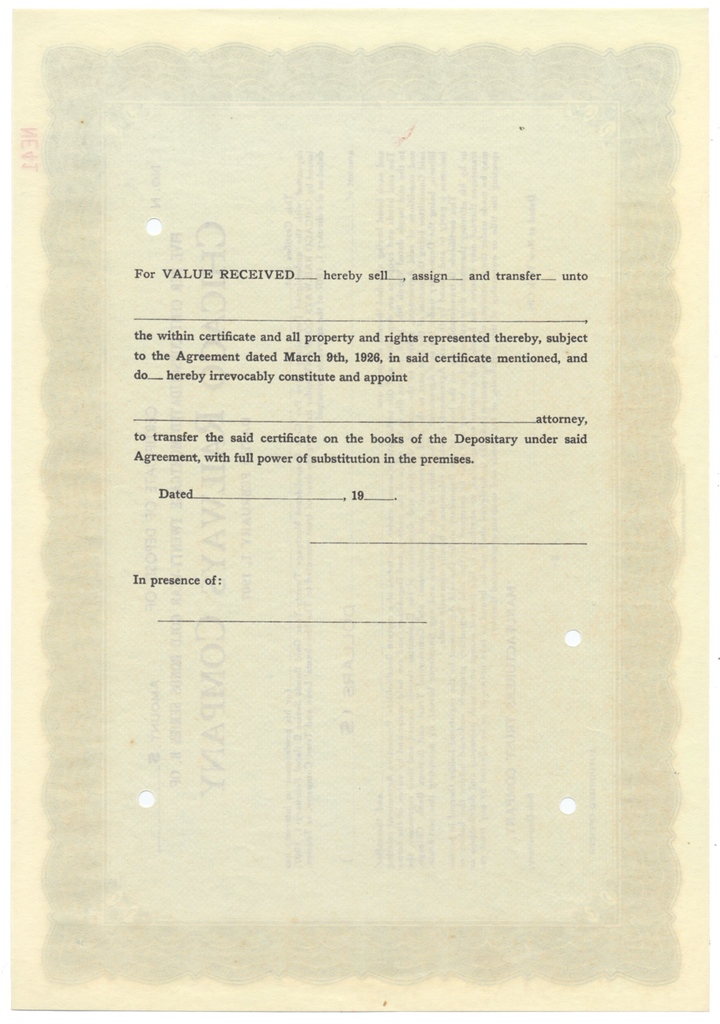Chicago Railways Company
- Guaranteed authentic document
- Orders over $75 ship FREE to U. S. addresses
Product Details
CompanyChicago Railways Company
Certificate Type
Certificate of Deposit
Date Issued
Unissued, circa 1930's
Canceled
Yes
Printer
Columbian Bank Note Company
Signatures
NA
Approximate Size
11 1/4" (w) by 7 3/4" (h)
Images
Show the exact certificate you will receive
Guaranteed Authentic
Yes
Additional Details
NA
Reference
Historical Context
The first streetcars in Chicago were horse cars run by the Chicago City Railway Company and the North Chicago City Railway Company around 1858-1861. This method was slow and expensive, and the companies began substituting cable cars in the 1880s. Chicago City Railway was the first in (1881), and with the addition of the Chicago Passenger Railway (1883) and the West Chicago Street Railroad Company (1887), Chicago had the largest cable railway system in the world. The north and west side cable car systems were constructed by an investment syndicate under the direction of Charles Yerkes.
It was also in the 1880s that electric-powered "trolleys" first became practical. The Chicago companies hesitated at first to install these faster and more efficient systems because of their heavy investment in cable cars. But the smaller Illinois cities and the Calumet Electric Street Railway of the South Side built successful systems, causing the Chicago companies to feel themselves dropping behind. By the mid-1890s most of them had begun the conversion to electricity, which was completed in 1906.
A political conflict dubbed the Chicago Traction Wars arose concerning the franchise and ownership of the city's streetcars.
The 1890s saw the consolidation of many of the Chicago companies, and this reorganization continued into the next century. In 1907 to 1909, the companies were granted franchises pursuant to various ordinances, under which the city reserved the right to purchase the systems. The Settlement Ordinance of 1907 imposed various operating requirements on two of the underlying companies, the Chicago City Railway Company and Chicago Railways, and established a new bureau, the Board of Supervising Engineers (Chicago Traction), a board of engineers and accountants with responsibilities for assuring compliance with the ordinances, and setting standards for equipment and construction.
Through Routes over the lines of several companies were instituted in 1910, and, for instance, resulted in joint service by the Chicago City Railway Company and Calumet and South Chicago Railway between downtown and 119th Street via Cottage Grove. There was also joint service operated by the South Chicago City Railway and the Hammond, Whiting, and East Chicago Electric Railway into Indiana, with each company collecting its own fare, which continued until the Hammond company converted to buses in 1940.
The continuous reorganization was finally completed by the Unification Ordinance of 1913, which stipulated that all lines would come under the management of a single operating association called the Chicago Surface Lines (CSL), and unified operations commenced in 1914. Four companies formed the CSL: the Chicago Railways Company, Chicago City Railway, Calumet and South Chicago Railway, and Southern Street Railway. At this time, Chicago had the largest street railway system, the longest one-fare ride, the longest average ride, and the most liberal transfer privileges in the world.
The 1920s saw continued growth despite the increasing competition from the automobile, and while the 1933-1934 World's Fair and wartime demand supported ridership, the underlying companies were bankrupt. Creditors' bills were filed against the Chicago Railways in 1926 and the Chicago City Railway and Calumet and South Chicago in 1930, resulting in the appointment of receivers and bringing their property into the custody of the Federal District Court. In 1944, the proceedings were converted to those under the Bankruptcy Act, and trustees were appointed. By June 10, 1958 (line 22), the Chicago Transit Authority, which took over the Chicago Surface Lines in 1947, had abandoned the remaining streetcars lines, which were "bustituted." Before that, CSL had introduced gasoline buses for light routes in 1927, and trolley buses to the northwest side starting April 17, 1930. Trolleybus system of Chicago scrapped March 25, 1973.
Related Collections
Additional Information
Certificates carry no value on any of today's financial indexes and no transfer of ownership is implied. All items offered are collectible in nature only. So, you can frame them, but you can't cash them in!
All of our pieces are original - we do not sell reproductions. If you ever find out that one of our pieces is not authentic, you may return it for a full refund of the purchase price and any associated shipping charges.









